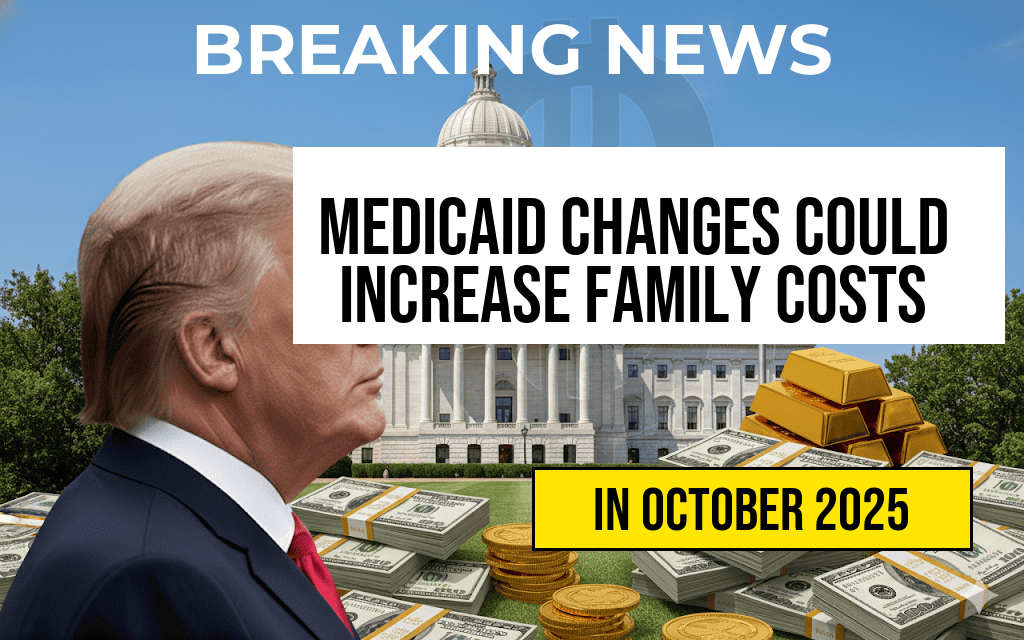Medicaid Policy Shifts Could Elevate Family Healthcare Expenses by Over $5,000 Annually
Recent modifications to Medicaid eligibility and cost-sharing policies are poised to significantly increase the financial burden on many American families. Analysts project that some household out-of-pocket healthcare expenses could rise by more than $5,000 annually, as states implement stricter requirements and introduce new fees. These changes, part of broader efforts to reduce Medicaid costs and promote individual responsibility, may disproportionately impact low- and middle-income households relying heavily on the program for essential medical services. As policymakers navigate debates over healthcare affordability and access, families are left considering the potential financial consequences of these policy shifts.
Understanding the Policy Changes and Their Scope
The recent policy adjustments stem from federal and state initiatives aimed at tightening Medicaid eligibility and increasing cost-sharing provisions. Several states have adopted measures such as:
- Stricter income verification processes to prevent enrollment fraud and tighten eligibility.
- Introduction of premiums for certain enrollees, particularly adults who are working but low-income.
- Increased copayments and deductibles for doctor visits, prescriptions, and hospital stays.
- Work requirements for able-bodied adults, potentially leading to loss of coverage for non-compliance.
While these policies aim to curb Medicaid expenditures and encourage employment, they often result in higher direct costs for enrollees. The Congressional Budget Office (CBO) estimates that such measures could reduce Medicaid enrollment by approximately 1 million individuals nationwide, but at the expense of increased out-of-pocket costs for many remaining beneficiaries.
Projected Financial Impact on Families
Experts caution that families already facing tight budgets may encounter substantial increases in healthcare expenses. Based on recent analyses, some households could see additional annual costs exceeding $5,000. This figure considers increased premiums, copayments, deductibles, and the potential for delayed or forgone care due to affordability issues.
| Cost Category | Average Annual Increase |
|---|---|
| Premiums | $2,000 – $3,000 |
| Copayments & Deductibles | $1,500 – $2,000 |
| Additional Fees & Penalties | $500 – $1,000 |
For families with chronic conditions or ongoing healthcare needs, these added costs could significantly strain household budgets, potentially forcing difficult choices between medical care and other essentials like housing and food. The Urban Institute highlights that even modest increases in out-of-pocket expenses can lead to decreased healthcare utilization, worsening health outcomes over time.
Disparities and Vulnerable Populations at Risk
While the policy changes aim to promote fiscal responsibility, they risk widening disparities among vulnerable groups. Low-income individuals, seniors, and those with disabilities often rely on Medicaid for comprehensive coverage. Increased cost-sharing may lead to:
- Delayed or skipped medical appointments
- Reduced medication adherence
- Higher long-term healthcare costs due to unmanaged conditions
State-level data indicates that populations in rural areas or communities with limited healthcare infrastructure are particularly susceptible to negative impacts from these policies. The National Association of Medicaid Directors warns that such measures could undermine efforts to improve health equity and access.
Policy Responses and Public Sentiment
Healthcare advocacy groups and consumer rights organizations are voicing concerns over the potential for increased financial hardship. They argue that while cost containment is necessary, policies must balance fiscal responsibility with access and affordability. Some states have introduced measures to mitigate adverse effects, such as sliding scale premiums or income exemptions, but these are not universally adopted.
Meanwhile, public opinion remains divided. A recent survey conducted by the Kaiser Family Foundation indicates that Americans are increasingly worried about healthcare affordability, especially amid rising inflation and economic uncertainty. Policymakers face mounting pressure to address these concerns without compromising the sustainability of Medicaid programs.
Looking Ahead: Navigating Healthcare Affordability
As federal and state governments continue to refine Medicaid policies, families are encouraged to stay informed about eligibility and coverage options. Resources such as Medicaid.gov provide updates and assistance in understanding individual rights and responsibilities.
Experts recommend reviewing personal healthcare plans regularly and exploring additional assistance programs for low-income families. Community health centers and local social services may offer supplemental support for those facing increased out-of-pocket costs.
Ultimately, balancing budget constraints with the need for accessible healthcare remains a complex challenge. Stakeholders across the spectrum continue to debate the best path forward to ensure that reforms do not inadvertently place vital medical services beyond the reach of those who need them most.
Frequently Asked Questions
How do recent Medicaid policy changes affect family out-of-pocket costs?
Recent Medicaid policy changes may lead to an increase of over $5,000 annually in family out-of-pocket costs, making healthcare more expensive for many households.
Which families are most impacted by these Medicaid policy changes?
Families with low to moderate incomes who rely heavily on Medicaid for healthcare coverage are most impacted, potentially facing higher medical bills and additional financial strain.
What specific policy changes are responsible for the rise in medical expenses?
The policy changes include reductions in benefits, stricter eligibility criteria, and increased cost-sharing requirements, all contributing to higher out-of-pocket costs.
How can families prepare for potential increases in medical expenses?
Families should consider reviewing their healthcare plans, exploring additional coverage options, and budgeting for higher medical costs to better manage the financial impact of these policy changes.
Are there any assistance programs available to help offset increased medical costs?
Yes, some state and federal assistance programs may provide support, but eligibility varies. It is advisable to consult local resources and healthcare advocates to identify available aid.

Leave a Reply